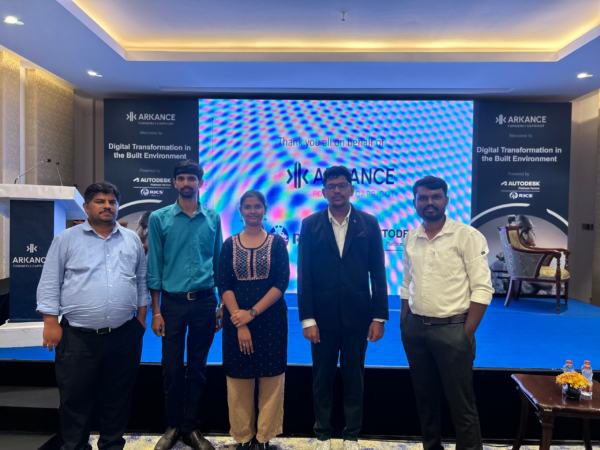
July 15, 2024 | Articles
Construction’s Digital Transformation & The Tools of Modern Project Management
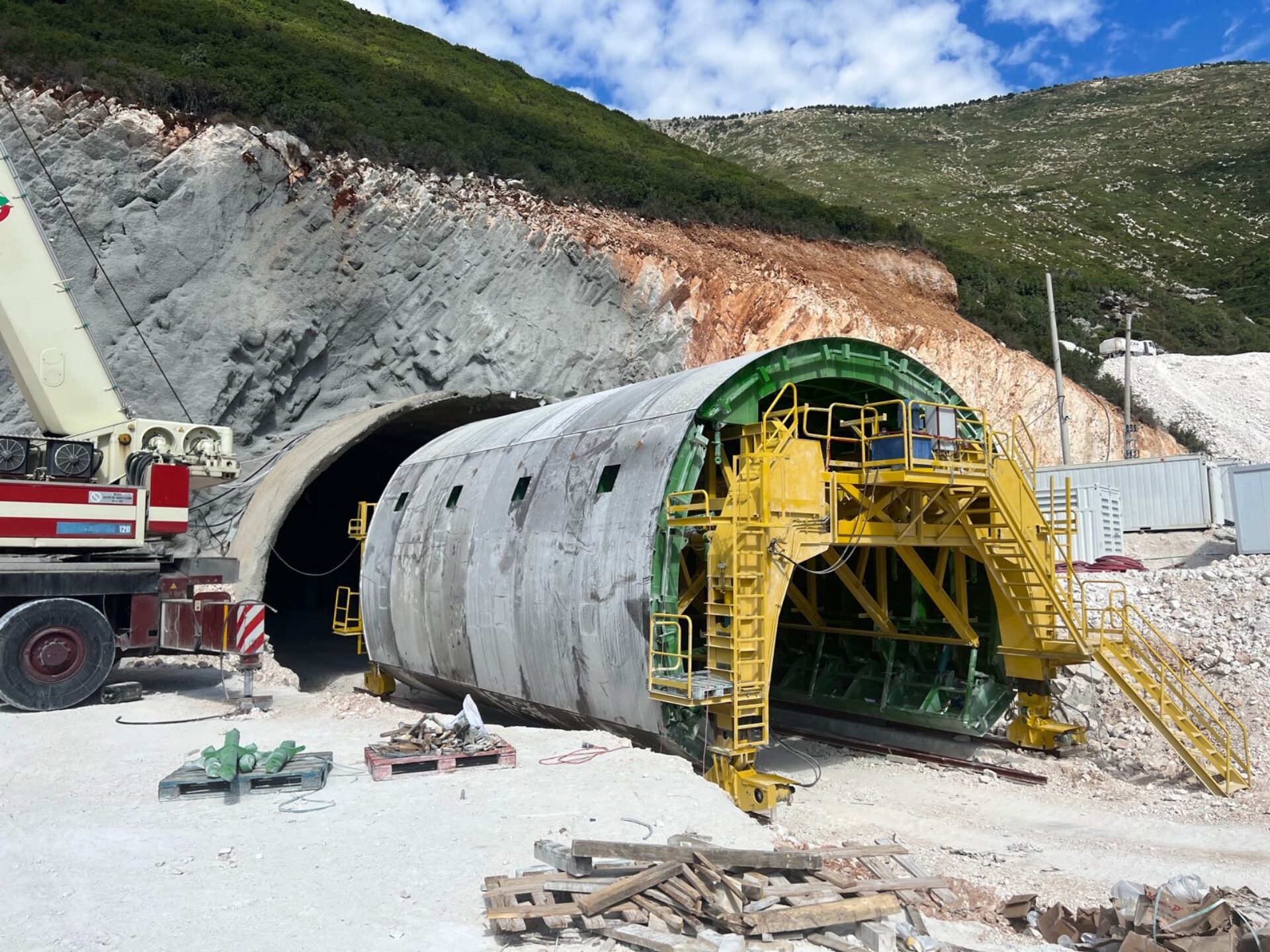
The International Tunnelling Association’s (ITA-AITES) annual World Tunnel Congress (WTC) is regarded as the underground industry’s most well-attended conference globally. The Greek Tunnelling Association hosted this year’s event, WTC2023, at the Megaron Athens International Conference Centre in May. There, thousands of researchers, practitioners, and other leaders in the industry came together to explore the conference theme: “Expanding Underground.”
A Timely Gathering
The expanding role of tunneling in our changing world was one of the primary topics at WTC2023. Many speakers and presenters showcased how, over the next few decades, urban environments around the word will face significant challenges in mitigating the effects of climate change. Indeed, the increasing frequency and intensity of storms and extreme weather events associated with climate change may compromise the reliability of our surface infrastructure such as roads, railways, and power distribution networks. By expanding underground, our governments can preserve many vital services even in the face of severe weather conditions.
Expanding underground may also help limit our cities’ contributions to climate change. Researchers and practitioners have developed innovative low-carbon materials and advanced construction techniques to reduce the environmental impact associated with building underground infrastructure. In addition, tunnelling plays a vital role in minimizing the environmental impact of transportation systems. Underground mass transit systems offer a transportation solution that reduces individuals’ dependence on automobiles. This leads to reduced carbon emissions, improved air quality, and a better acoustic environment in our cities. Furthermore, tunnels provide a means to establish underground utility corridors, eliminating the need for overhead transmission lines. This approach not only improves aesthetics, but also optimizes land use.
Emerging Technologies
The conference also showcased new technologies and expanding uses for technology that will help the tunneling industry better meet our cities’ most pressing needs. Technologies such as building information modeling (BIM), big data, machine learning, and artificial intelligence (AI) have the potential to revolutionize underground construction by improving efficiency, reducing costs, and increasing safety.
BIM began as a static representation of a building project. With advancements in technology, it has evolved into the dynamic twin, the performance twin, and now, the managed twin. The static twin involves a three-dimensional digital representation of a building or structure, incorporating architectural, structural, and mechanical, electrical, and plumbing information. The dynamic twin introduces the element of time, enhancing the static twin by simulating and visualizing the construction process in a virtual environment. Building upon the dynamic twin, the performance twin focuses on the operational phase of the structure. It incorporates real-time data from sensors, building management systems, and other sources to simulate and analyze the structure’s performance. By monitoring and analyzing data in real-time and running simulations, owners and operators can use the performance twin to optimize their asset’s performance and maintenance, reduce energy consumption, and improve end-user satisfaction.
The managed twin is the pinnacle of BIM innovation. It integrates the static, dynamic, and performance twins into a comprehensive digital twin that incorporates data from various sources, including design, construction, operations, and maintenance, to create a unified and accessible virtual environment for all stakeholders. In underground construction, use of the BIM managed twin can help simplify asset management by controlling information, workflows, and processes throughout the life cycles of underground assets. This helps owners manage design and construction and facilitates maintenance and operations, reducing life cycle costs and extending the useful lives of our tunnels.
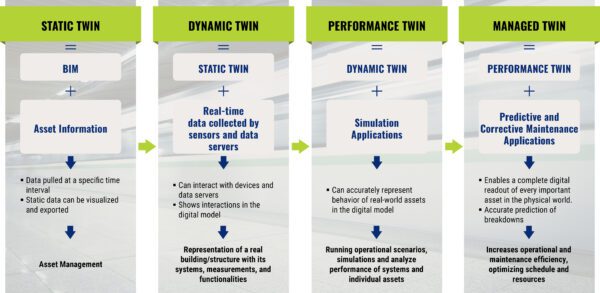
Likewise, AI is poised to revolutionize the field of underground construction by delivering considerable benefits across the underground asset life cycle. Beginning in planning and design, AI algorithms can analyze geological data, ground conditions, and project requirements. Leveraging big data, AI algorithms can go on to generate optimized tunnel designs, taking into account factors such as stability, excavation techniques, and cost efficiency. This AI-driven approach revolutionizes decision-making, enabling faster and more accurate design iterations.
AI can also automate a range of processes in underground construction, including the operation of tunnel boring machines (TBMs), real-time excavation monitoring, materials handling, and surveying tasks. This improves efficiency, enhances safety, and helps mitigate the risk of delays and disruptions. Following construction, AI can be used to predict maintenance needs, minimizing the risk of equipment failure and optimizing maintenance schedules—especially when combined with data from a managed twin BIM model.
The emergence of swarm robotics will also help shape the future of tunnel construction. Equipped with AI algorithms and sensors, these robots can navigate complex terrains and work collaboratively to excavate soil, install supports, and lay infrastructure. Real-time communication and coordination between these robots optimize workflows, minimizing construction time and reducing the need for human labor in hazardous or repetitive tasks. Combined with the managerial power of digital twins, swarm robotics can help execute a variety of maintenance and operations tasks throughout an asset’s life cycle.
All in all, WTC2023’s program presented attendees with a compelling vision, in which AI, digital twin technology, and swarm robotics converge to transform the underground industry and make our tunnels safer, stronger, and more efficient.
Diversity and Inclusion
In addition to its comprehensive coverage of tunnelling’s importance to our cities and innovative tunneling technologies, WTC2023’s program also addressed diversity. A session entitled “Women in Tunnelling” took on the topic of gender diversity in the industry and offered insights and suggestions on ways to improve.
Specifically, the session provided a platform for women to discuss their careers and offer insights into their experiences in the field. By shedding light on challenges they’ve faced, the women fostered a greater understanding of how the industry can overcome obstacles to promote inclusivity and equal opportunities for women and other traditionally underrepresented groups. Their overarching message was clear: by harnessing a broader range of talents and perspectives, the tunneling industry will ultimately be more resilient and more capable.
Site Visits
To complement the wealth of knowledge shared during the conference, the Greek Tunneling Organization organized a series of technical tours to provide attendees with practical insights into underground projects of national importance in the Athens area. Among the sites visited were the Athens Metro Line 4 Project and the Ellinikon Project, two projects supported by project and construction management firm Hill International, Inc.
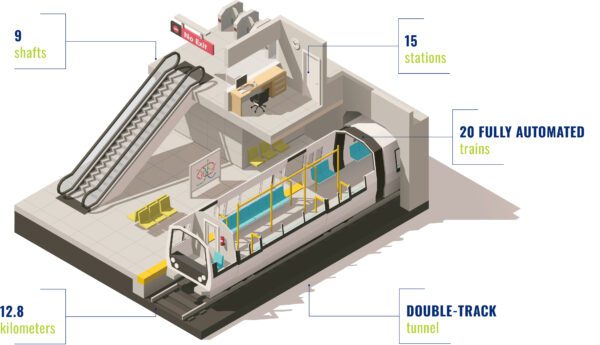
The Athens Metro Line 4 project is a large part of client and operator Attiko Metro’s overall strategic transit plans for the Attica region and will connect the northwest of Athens to the city center and other vital locations. Stretching over 12.8 km, the project consists of a double-track tunnel, 15 stations, and 9 shafts in Athens’ dense urban environment. The participants had the unique opportunity to visit the Katehaki shaft, a pivotal site in the upcoming underground construction efforts. This shaft will serve as the launch point for the first assembled earth pressure balance TBM, aptly named “Athena.” With excavation work set to commence in June 2023, Athena will dig a double-track tunnel spanning 5.1 km from Katehaki to Evangelismos. Hill leads an international consortium providing technical assistance consultancy services for the project.
For the Ellinikon Project, Hill is providing project management, construction management, and technical assistance services for the project’s infrastructure works. This bold urban redevelopment project aims to transform the Athenian coastline with residential facilities, tourist sites, cultural institutions, sports and entertainment facilities, commercial offices, retail developments, and the Metropolitan Park, envisioned as the largest coastal park in Europe. By leveraging underground construction, the project will optimize land use and help preserve and enhance the surrounding environment.
An underground focal point of the Ellinikon project is the Poseidonos Underpass, a relocation of a segment of coastal highway currently under construction. The Poseidonos Underpass is a 1,140-meter cut-and-cover tunnel with three cells for traffic/utilities and ventilation/traffic. The tunnel comprises two unidirectional tubes with intermediate on/off ramps, three lanes of traffic per tube increasing to four lanes at the location of the on/off ramps, and three emergency exits per tube. Since the tunnel is in a densely populated urban area and frequent congestion is expected, the project team is implementing state-of-the-art monitoring and semi-transverse ventilation for exhaust-fume extraction and smoke extraction in case of emergency.
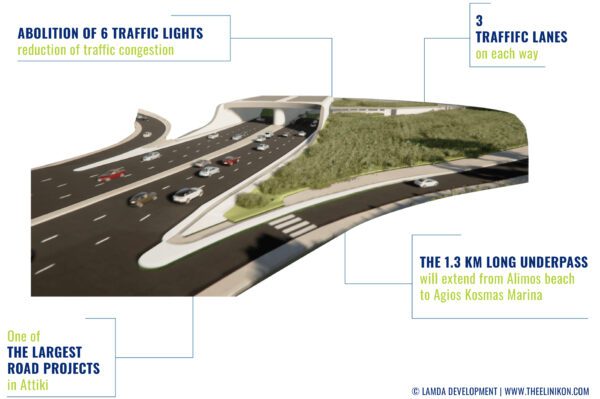
Final Thoughts
The WTC2023 Athens brought together a diverse array of tunneling industry experts and construction professionals from around the world and served as a catalyst for collaboration, knowledge exchange, and partnerships within the industry. With its captivating theme, “Expanding Underground,” the conference provided an apt platform to showcase the latest advancements in tunneling research, technology, planning, design, construction methodologies, safety and risk management practices, and sustainable and innovative solutions. Presentations inspired students, researchers, engineers, industry leaders, and other stakeholders to envision new ways to optimize the use of limited resources, enhance resilience in the face of climate change and other pressing challenges, and create more sustainable urban environments. By any measure, the event was a resounding success.
“Reflecting on the success of this year’s World Tunnel Congress, we are confident that the knowledge gained and connections forged will drive the exploration of new possibilities for the expansion of underground spaces in Europe and worldwide,” says Hill Senior Vice President and Managing Director, Europe Emmanouil Sigalas. “The technical tours provided participants with a first-hand appreciation of the complexities involved in delivering major infrastructure projects. Our integral role in these endeavors reaffirms Hill International’s expertise in managing large-scale undertakings, solidifying our position as a trusted partner in program, project, and construction management. At Hill, we are committed to building and fostering a diverse and inclusive workforce within our European organization, focusing on executing significant infrastructure projects across the continent. We firmly uphold the values of excellence, innovation, and sustainability in all aspects of our operations and eagerly anticipate collaborating with our partners, clients, and stakeholders to realize the vision of ‘Expanding Underground’ throughout Europe.”
Share

July 15, 2024 | Articles
Construction’s Digital Transformation & The Tools of Modern Project Management

July 10, 2024 | Articles
GC/CM at Post Falls: Managing Avista’s North Channel Dam Rehabilitation Project

June 23, 2024 | Articles
Irv Richter – An Innovator, A Pioneer, A Leader (1944 – 2024)

June 14, 2024 | Articles
Environment of Care Standards – Meeting the Challenge (Part Two)

June 13, 2024 | Articles
PMO for Public Transit Project Success: The Reopening of Philadelphia’s Franklin Square Station

June 7, 2024 | Articles

May 17, 2024 | Articles
Hill Interim Federal Market Sector Leader Jane Penny Receives Golden Eagle Award
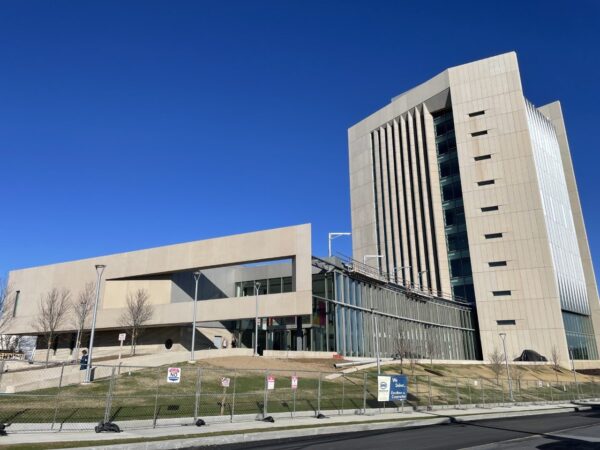
April 11, 2024 | Articles
A Model Move: Managing Move-In at the Sylvia H. Rambo U.S. Courthouse